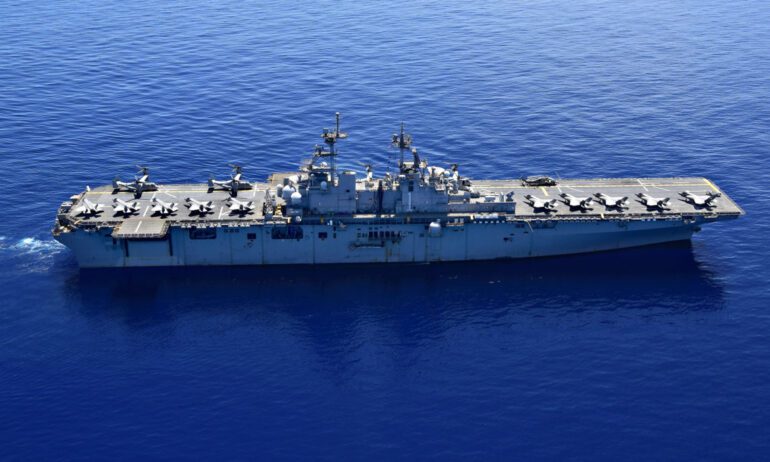TL;DR:
- US Fourth Fleet aims to operationalize unmanned systems and seeks AI watchstander tools to manage data influx.
- Current systems incorporate AI capabilities for onboard imagery analysis.
- Expansion of unmanned systems and AI testing to Central and South America.
- Fourth Fleet uses Minotaur system for unmanned data display, but watchstanders require additional AI assistance for data comprehension.
- AI tools can help identify and prioritize activities, optimizing resource allocation.
- Fourth Fleet’s efforts will accelerate unmanned and AI development for the military overall.
- Larger-scale demonstrations will encourage increased investments in AI and unmanned systems.
Main AI News:
In a bid to embrace the operationalization of unmanned systems, the US Fourth Fleet is actively exploring the integration of artificial intelligence (AI) tools for watchstander data analysis. With an ever-increasing influx of data, officials see this innovation as a crucial step to fuel further investment in this dynamic field.
Cmdr. David Edwards, the Fourth Fleet’s Director of Technology and Innovation, emphasized during a recent media call on July 20 that several of their current unmanned system testing operations already incorporate AI capabilities to analyze imagery onboard the vehicles themselves. However, the fleet is keen on developing a future AI tool to effectively monitor and manage the abundance of data streaming in.
Secretary Carlos Del Toro and Adm. Mike Gilday earlier revealed plans to expand the successful testing of unmanned systems and AI, similar to Task Force 59’s achievements, to the Fourth Fleet’s domain covering Central and South America (Defense Daily, April 4). This expansion commenced during the UNITAS exercise this month.
The Fourth Fleet currently utilizes the Minotaur system to visualize unmanned data. This government-owned software device is designed to integrate data feeds from multiple sources, making it a valuable asset. Nevertheless, Edwards stated that the watchstander requires additional assistance in processing and comprehending the significance of the data, differentiating routine information from critical events.
To address these challenges effectively, the fleet is eyeing the development of a dedicated watchstander data tool. This tool aims to enhance the fleet’s understanding of the data inflow, enabling watchstanders to distinguish between regular days and situations that demand immediate action. Rear Adm. Jim Aiken, the Fourth Fleet commander, highlighted the complexities of his area of operations, with 700 fishing vessels engaged in various activities, ranging from normal work to illicit actions like drug trafficking and human trafficking. Utilizing AI tools, the fleet can identify and prioritize specific activities, optimizing the deployment of their limited resources to tackle challenges and enforce international law.
DIU Director Doug Beck lauded the Fourth Fleet’s efforts, noting that their progress in unmanned and AI development would have far-reaching implications for the entire military. By leveraging AI and sensors for maritime domain awareness at scale, the Fourth Fleet serves as a stellar example of how larger-scale demonstrations can encourage increased investments in AI and unmanned systems.
The integration of unmanned and AI systems has already proven its worth in the Fifth Fleet and Task Force 59, enabling them to develop a comprehensive understanding of regular maritime activities. In cases of deviations, these advanced systems can efficiently investigate and respond.
Last month, Northrop Grumman unveiled the design of an autonomous uncrewed VTOL aircraft, capable of operating from Navy ships at sea, reflecting a continued drive towards harnessing the full potential of unmanned systems.
Conclusion:
The US Fourth Fleet’s pursuit of AI watchstander tools signifies a significant step towards enhancing the operationalization of unmanned systems. By harnessing AI capabilities to manage the influx of data, the fleet can better understand and respond to maritime activities. This endeavor not only sets the stage for further advancements in unmanned and AI technologies but also presents promising opportunities for the market as demand for sophisticated AI tools and unmanned systems is expected to grow in both military and civilian sectors.

